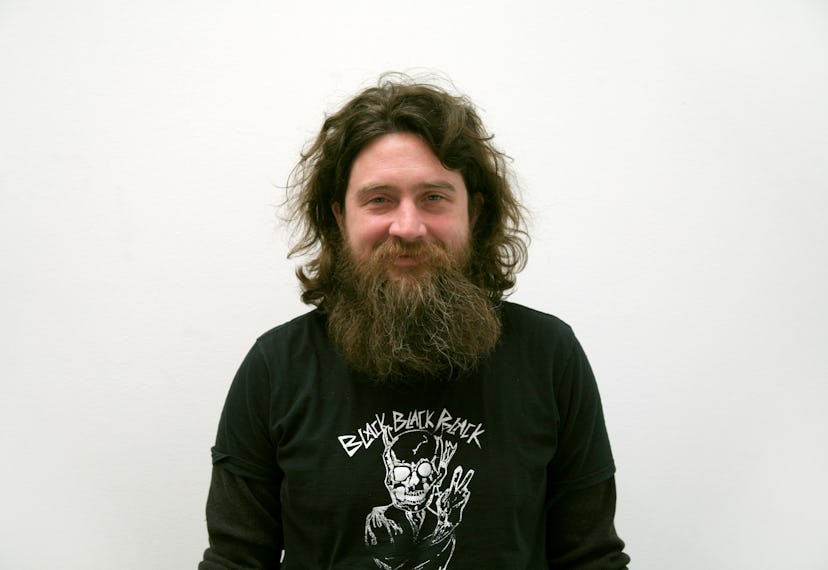Justin Adian

About five years ago, the New York artist Justin Adian found some foam filling on the street. Inspired, he brought it to his Brooklyn studio, intending to make a sculpture. “It didn’t work,” Adian says of the finished product, which looked like a cushion mounted on a wall—or, worse yet, the work of the American artist John Chamberlain. “I liked it, but it wasn’t mine.” So Adian, 37, turned to what felt familiar. “Because I think like a painter, my solution was to stretch canvas over the foam.”
Adian’s stretched canvases crease like skin around the edges of squared cushions, soft-edged planks, and rectangular bolsters in wall pieces that have attracted big collectors like Michael Ovitz. Sometimes their parts overlap; other times they are designed to be placed in a corner. “I think of my work as paintings, but I have no problem with people calling them sculptures,” he says. Next year, Adian’s installation at Lever House in New York will run concurrently with a solo show at the National Exemplar gallery in TriBeCa. His engagement with the Lever House’s Gordon Bunshaft–designed architecture will no doubt bring up the same question: painting or sculpture? Adian is happy about the ambiguity: “If you’re not sure what something is, it gives you a lot of freedom.”
Adian’s Curtsy, 2010. Photograph by Myriam Babin.
All Over the Map
“There’s a little control—but a lot of chance.” Read more about Israel Lund here. Photograph by Amanda Hakan.
“Jokes and laughter are a way of opening up your subconscious.” Read more about Tala Madani here. Portrait by Adam Laycock.
“I have really intense attachments to every single thing in the work.” Read more about Samara Golden here. Courtesy of the artist.
“I think of my work as paintings, but I have no problem with people calling them sculptures.” Read more about Justin Adian here. Photograph by James McKee.
“The images are old, ancient even. But the way they’re all gathered from different places speaks to our world today.” Read more about Kour Pour here. Photograph by Stephanie “Elle” Quintana.
“People think Brazilians are happy all the time, but there’s a lot of sadness here.” Read more about Adriano Costa here. Courtesy of Mendes Wood DM, Sao Paulo
“I will never be the kind of artist who does one thing.” Read more about Jean-Baptiste Bernadet here. Photograph by Amanda Hakan.